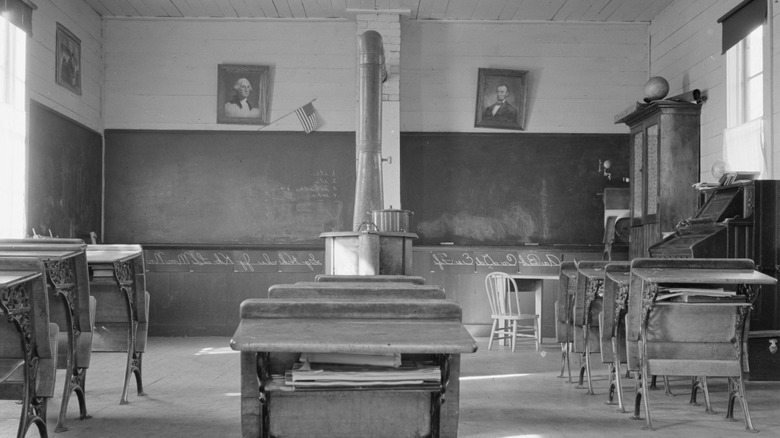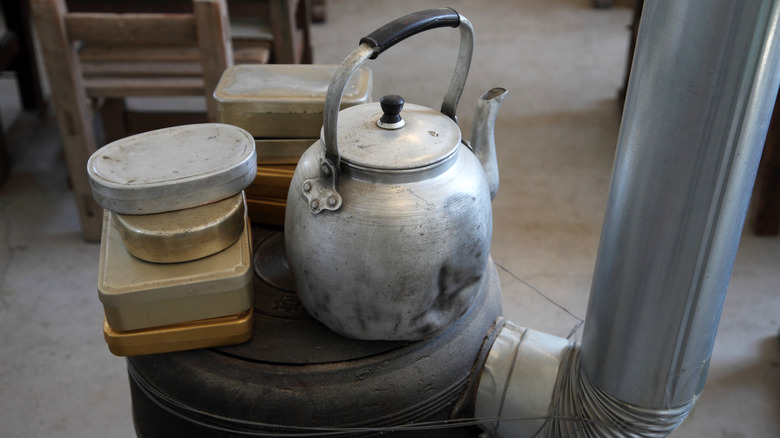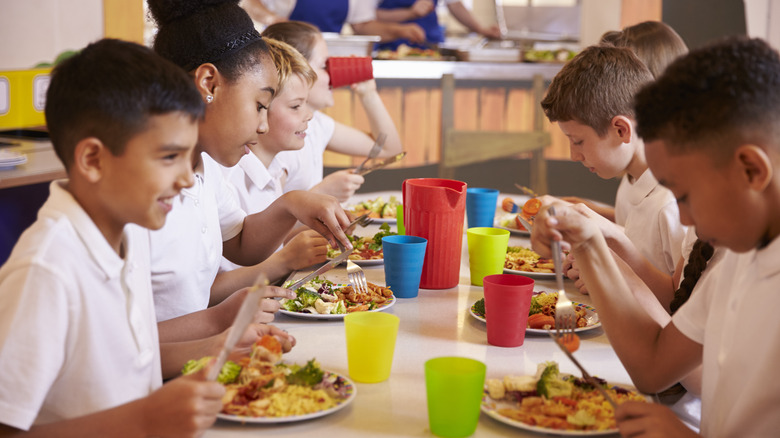Why Classroom Heaters Were Once Used As School Kitchens
Deep down, everyone knows that the best time of the school day isn't math, science, or history, but lunchtime. Much like the kitchen is the heart of the home, the school cafeteria is, in many ways, the epicenter of student life. It offers a welcome respite from lectures and exams, a space for social interaction, and occasionally, an arena for gladiatorial food fights. School lunches in the United States are not exactly famous for their quality, but it is important to note how far we have come, considering students once had to use the classroom heater if they wanted a warm meal.
Today, public school lunches are a lifeline for many families in need, but such programs were unheard of in the U.S. until over a century into the nation's existence. According to Time Magazine, the first lunch program for American public school students was launched in Philadelphia in 1894, though not by the educational institutions themselves. The Starr Center Association, a volunteer group, offered students a midday meal for a penny apiece. PBS credits Boston as the next city to join the school lunch movement, spearheaded by the Women's Educational and Industrial Union, which made hot lunches at a central location and distributed them to schools in the neighborhood.
Heaters pulled double duty because space was limited
School lunch programs expanded fairly quickly in American cities, but rural schools faced unique challenges, as PBS explains. The facilities did not have adequate space to develop their own kitchen and dining facilities, and they were too geographically separated to be serviced by a central kitchen like the schools in Boston were doing. WisContext, a joint collaboration between PBS and Wisconsin Public Radio, adds that rural school districts had far less staff and taxpayer funding to operate, which prevented them from launching their own lunch programs. In the cold winter months especially, access to a much-needed hot meal would have been impossible were it not for the ingenuity of teachers.
Rural schoolhouses at the time were kept warm by a stove in the classroom and some clever teachers realized that they could pull double duty by heating lunches on the top. PBS and WisContext recall a unique practice in the state's history known as the "Wisconsin pint jar method" that emerged around 1920. Students would come to school with a pint jar full of food, which the teacher would keep warm in a pot of hot water on the stove until lunchtime. The practice remained common until the government stepped in to expand the U.S. school lunch program.
Federal action brought lunch programs to rural schools
Thankfully, the classroom stove heater is no longer a staple of school lunch programs. As Teach for America recounts, the second half of the 20th century saw school lunches expand across the United States. In 1946, Congress passed the National School Lunch Act, creating a standardized program with federal oversight. This was followed two decades later by the Child Nutrition Act, which established subsidies for low-income families, a particularly vital move in rural regions of the country, as well as the first school breakfast program.
Some states pushed back against the effort, citing fiscal concerns, which goes to show that some things never change, as individual states have continued to clash with federal lunch programs ever since. After the Reagan administration cut $1.5 billion from the federal school lunch budget in the '80s, per Time Magazine, private companies swooped in to take over meal programs. It wasn't until 2010's Healthy, Hunger-Free Kids Act passed that Congress resumed a concerted effort to tend to students' nutritional needs, an effort in which the Keep Kids Fed Act is only the latest development.


